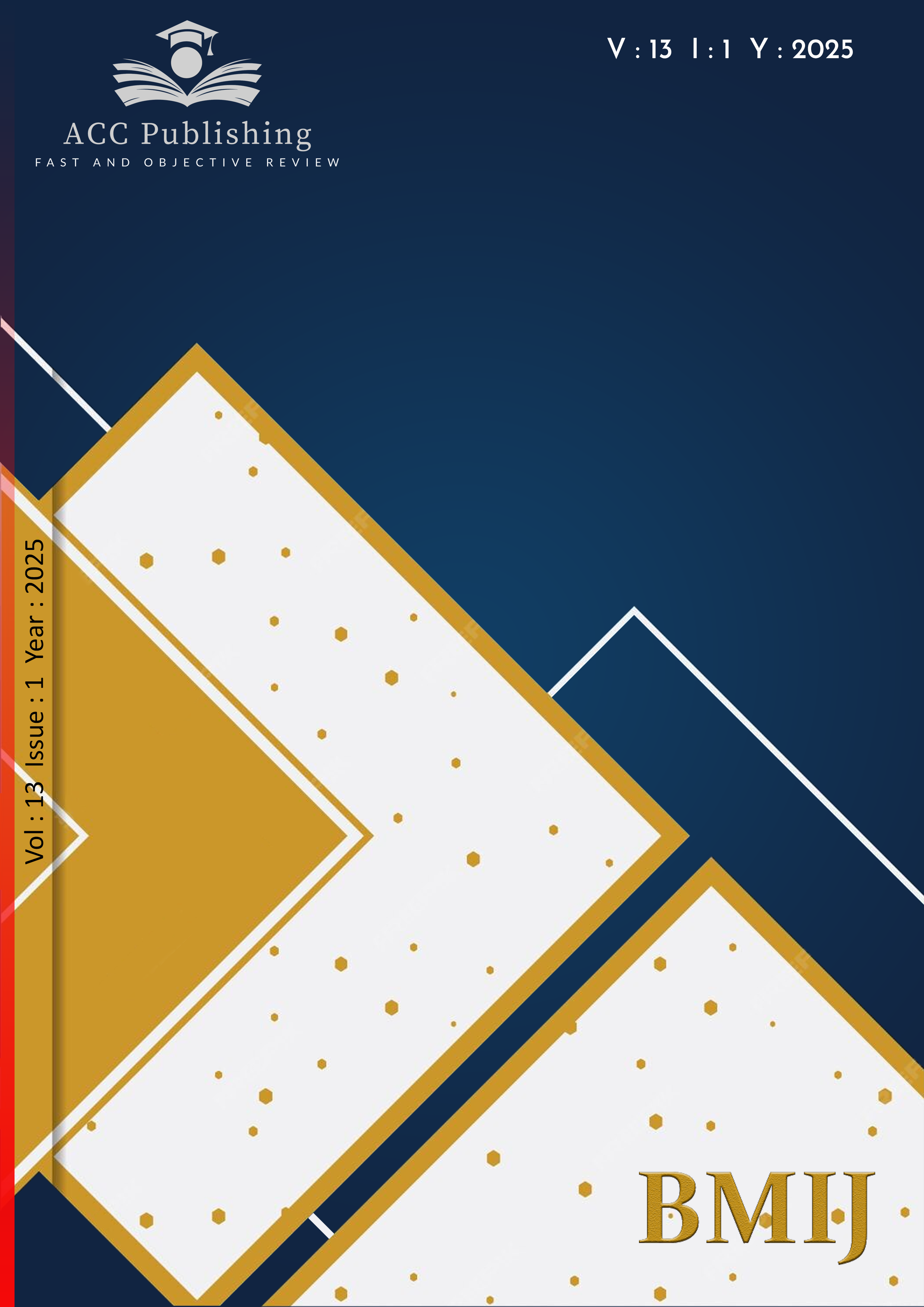
Yayınlanmış 25.03.2025
Anahtar Kelimeler
- Workplace Violence, Occupational Health and Safety, Social Policy
- İş Yerinde Şiddet, İş Sağlığı ve Güvenliği, Sosyal Politika
Nasıl Atıf Yapılır
Telif Hakkı (c) 2025 Derya Çevik Taşdemir

Bu çalışma Creative Commons Attribution-NonCommercial-NoDerivatives 4.0 International License ile lisanslanmıştır.
Nasıl Atıf Yapılır
Öz
Bu makale, iş sağlığı ve güvenliği perspektifiyle iş yerinde şiddetin farklı türlerini, sebeplerini ve bu şiddetin etkilerini detaylı bir şekilde ele almaktadır. Dünya çapında çalışanların beşte birinden fazlasının yaşamları boyunca iş yerinde şiddete ve tacize uğraması, bu sorunun önemli bir araştırma konusu olduğunu göstermektedir. Çalışmada, fiziksel şiddetin yanı sıra daha karmaşık ve yaygın olan psikolojik şiddet gibi olgulara da odaklanılmıştır. Bu şiddet türlerinin, iş yerindeki insan ilişkilerine, çalışanların psikolojik ve fizyolojik sağlığına etkileri kapsamlı bir şekilde incelenmiştir. Ayrıca, iş yerinde şiddetin yaygın nedenleri, sonuçları ve bu tür şiddetlerin önlenebilmesi için alınabilecek stratejiler tartışılmıştır. İş yerlerinde sağlıklı, güvenli ve destekleyici bir ortam oluşturulabilmesi adına uygulanabilecek önlemler önerilmiştir. Makale, işverenler, çalışanlar, araştırmacılar ve politika yapıcılar için değerli bir kaynak oluşturmakta olup, iş yerindeki şiddeti tanıma, anlama ve önleme konusunda farkındalık oluşturmayı amaçlamaktadır. Bu sayede, iş yerinde şiddetin etkilerinin azaltılması ve daha sağlıklı bir çalışma ortamının sağlanması hedeflenmektedir.
Referanslar
- Al-Qadi, M. M. (2021). Workplace violence in nursing: A concept analysis. Journal of Occupational Health, 63(1), e12226. https://doi.org/10.1002/1348-9585.12301
- Barling, J., Dupré, K. E., and Kelloway, E. K. (2009). Predicting workplace aggression and violence. Annual Review of Psychology, 60, 671-692. https://doi.org/10.1146/annurev.psych.60.110707.163629
- Bektaş, U. (2023). Sözlü ve fiziksel şiddetin işe yabancılaşma ve işe tutkunluk üzerine etkisi: İş yeri stresinin aracı değişken rolü.
- Bhattacharjee, D. (2021). Workplace violence in healthcare: Towards a psychosocial perspective. Aggression and violent behaviour, 58, 101573. https://doi.org/10.1016/j.avb.2021.101573
- Björkqvist, K. (1992). Trakassering förekommer bland anställda vid ÅA [Harassment occurs among employees of Abo Academy]. Meddelanda från Åbo Akademi (9), 14–17.
- Brann, M., and Hartley, D. (2017). Nursing student evaluation of NIOSH workplace violence prevention for nurses online course. Journal of Safety Research, 60, 85-91. https://doi.org/10.1016/j.jsr.2016.12.003
- Chirico, F., Capitanelli, I., Bollo, M., Ferrari, G., and Acquadro Maran, D. (2021). Association between workplace violence and burnout syndrome among schoolteachers: A systematic review. Journal of health and social sciences, 6(2), 187-208. https://dx.doi.org/10.19204/2021/ssct6
- Cleary, M., Hunt, G. E., Walter, G., and Robertson, M. (2009). Dealing with bullying in the workplace: Toward zero tolerance. Journal of Psychosocial Nursing and Mental Health Services, 47(12), 34-41. https://doi.org/10.3928/02793695-20091103-03
- Cortina, L. M., and Areguin, M. A. (2021). Putting people down and pushing them out: Sexual harassment in the workplace. Annual Review of Organizational Psychology and Organizational Behaviour, 8(1), 285-309. https://doi.org/10.1146/annurev-orgpsych-012420-055606
- Cortina, L. M., Kabat-Farr, D., Leskinen, E. A., Huerta, M., and Magley, V. J. (2013). Selective incivility as modern discrimination in organisations: Evidence and impact. Journal of management, 39(6), 1579-1605. https://doi.org/10.1177/0149206311418835
- Çevik Taşdemir, D. (2019). İş sağlığı ve güvenliğinin işgören performansına etkileri ve iş doyumunun aracılık rolü.Hiperlink Yayınları.
- Demirci, Ş., and Çilhoroz, Y. (2023). Şiddet ve Şiddet Yönetimi. Olağan Dışı Durumlarda Sağlık Yönetimi, 207.
- Dillon, B. L. (2012). Workplace violence: impact, causes, and prevention. Work, 42(1), 15-20. https://doi: 10.3233/WOR-2012-1322
- Distasio, C. A. (2002). Protecting yourself from violence in the workplace. Nursing2022, 32(6), 58-64.
- Edward, K. L., Ousey, K., Warelow, P., and Lui, S. (2014). Nursing and aggression in the workplace: a systematic review. British journal of nursing, 23(12), 653-659. https://doi.org/10.12968/bjon.2014.23.12.653
- EEOC. (2024). https://www.eeoc.gov/racecolor-discrimination (Erişim Tarihi: 30.09.2024).
- Einarsen, S. (1999). The nature and causes of bullying at work. International Journal of Manpower, 20(1/2), 16–27. https://doi.org/10.1108/01437729910268588
- Einarsen, S., Hoel, H., Zapf, D., and Cooper, C. L. (2011). The concept of bullying and harassment at work: The European tradition. In S. Einarsen, H. Hoel, D. Zapf, and C. L. Cooper (Eds.), Bullying and harassment in the workplace. Developments in theory, research and practice (2nd ed., pp. 3–39). CRC Press.
- Einarsen, S., Raknes, B. I., Matthiesen, S. B., and Hellesøy, O. H. (1994). Mobbing og harde personkonflikter: Helsefarlig samspill på arbeidsplassen. Sigma forlag
- Eurofound (2013), Physical and psychological violence at the workplace, Publications Office of the European Union, Luxembourg.
- FEMA. (2023). Contemporary Nurse, 21(2), 212-227. https://emilms.fema.gov/is_0026/groups/176.html (Erişim Tarihi: 18.11.2023). https://www.bls.gov/news.release/cfoi.nr0.htm (Erişim Tarihi: 18.11.2023).
- Fujishiro, K., Gee, G. C., and de Castro, A. B. (2011). Associations of workplace aggression with work- related well-being among nurses in the Philippines. American Journal of Public Health, 101(5), 861-867. https://doi.org/10.2105/AJPH.2009.188144
- Gebhardt, D. L., and Crump, C. E. (1990). Employee fitness and wellness programs in the workplace. American Psychologist, 45(2), 262. https://psycnet.apa.org/doi/10.1037/0003-066X.45.2.262
- Gerberich, S. G., Church, T. R., McGovern, P. M., Hansen, H. E., Nachreiner, N. M., Geisser, M. S., ... and Watt, G. D. (2004). An epidemiological study of the magnitude and consequences of work related violence: the Minnesota Nurses' Study. Occupational and environmental medicine, 61(6), 495-503. https://doi.org/10.1136/oem.2003.007294
- Glambek, M., Skogstad, A., and Einarsen, S. (2015). Take it or leave: A fiveyear prospective study of workplace bullying and indicators of expulsion in working life. Industrial Health, 53(2), 160–170. https://doi.org/10 .2486/indhealth.2014-0195.
- Hogh, A., Mikkelsen, E. G., and Hansen, A. M. (2011). Individual consequences of workplace bullying/mobbing. In S. Einarsen, H. Hoel, D. Zapf, and C. L. Cooper (Eds.), Bullying and harassment in the workplace. Developments in theory, research and practice (2nd ed., pp. 107–128). CRC Press. 9780429132483
- Holmes, C. A. (2006). Violence, zero tolerance and the subversion of professional practice. Contemporary Nurse, 21(2), 212–227. https://doi.org/10.5172/conu.2006.21.2.212
- ILO, (2020). Çalışma Yaşamında Şiddet ve Taciz.
- ILO, (2024). İş Yerinde Şiddet ve Taciz Algıları ve Deneyimleri. https://www.ilo.org/tr/publications/yerinde-siddet-ve-taciz-algilari-ve-deneyimleri (Erişim Tarihi: 23.12.2024).
- Kim, H. R. (2022). Associations between workplace violence, mental health, and physical health among Korean Workers: The Fifth Korean Working Conditions Survey. Workplace Health and Safety, 70(3), 161-172. https://doi.org/10.1177/21650799211023863
- Kolodej, C. (1999). Mobbing. Psihoterror na rabochem meste i metody ego preodoleniya.
- Kolodej, C. (2012). Mobbing.
- Krieger, N., Waterman, P. D., Hartman, C., Bates, L. M., Stoddard, A. M., Quinn, M. M., ... and Barbeau, E. M. (2006). Social hazards on the job: workplace abuse, sexual harassment, and racial discrimination—a study of Black, Latino, and White low-income women and men workers in the United States. International Journal of Health Services, 36(1), 51-85. https://doi.org/10.2190/3EMB-YKRH-EDJ2-0H19
- Krug, E. G. (2002). World report on violence and health.
- Lanza, M. (2006). Violence in nursing. In Handbook of workplace violence (pp. 147-168). SAGE Publications, Inc..
- Laschinger, H. K. S., Wong, C. A., and Grau, A. L. (2012). The influence of authentic leadership on newly graduated nurses' experiences of workplace bullying, burnout and retention outcomes: A cross-sectional study. International Journal of Nursing Studies, 49(10), 1266-1276. https://doi.org/10.1016/j.ijnurstu.2012.05.012
- Laschinger, H. K., and Nosko, A. (2015). Exposure to workplace bullying and post‐traumatic stress disorder symptomology: the role of protective psychological resources. Journal of Nursing Management, 23(2), 252-262. https://doi.org/10.1111/jonm.12122
- Leadbetter, D., and Paterson, B. (2004) Developing an agency approach to safe physical intervention. Nursing and Residential Care 6(6):280–3. https://doi.org/10.12968/nrec.2004.6.6.12996
- Leymann, H. (1990). Mobbing and psychological terror at workplaces. Violence and Victims, 5(2), 119–126. https://doi.org/10.1891/0886- 6708.5.2.119
- Leymann, H., and Gustafsson, A. (1996). Mobbing at work and the development of post-traumatic stress disorders. European Journal of Work and Organizational Psychology, 5(2), 251-275. https://doi.org/10.1080/13594329608414858
- Li, P., Xing, K., Qiao, H., Fang, H., Ma, H., Jiao, M., ... and Liu, M. (2018). Psychological violence against general practitioners and nurses in Chinese township hospitals: incidence and implications. Health and Quality of Life Outcomes, 16, 1-10. https://doi.org/10.1186/s12955-018-0940-9
- Li, Y. L., Li, R. Q., Qiu, D., and Xiao, S. Y. (2020). Prevalence of workplace physical violence against health care professionals by patients and visitors: a systematic review and meta-analysis. International journal of environmental research and public health, 17(1), 299. https://doi.org/10.3390/ijerph17010299
- Lim, M. C., Jeffree, M. S., Saupin, S. S., Giloi, N., and Lukman, K. A. (2022). Workplace violence in healthcare settings: the risk factors, implications and collaborative preventive measures. Annals of Medicine and Surgery, 78, 103727. https://doi.org/10.1016/j.amsu.2022.103727
- Limm, H., Gündel, H., Heinmüller, M., Marten-Mittag, B., Nater, U. M., Siegrist, J., and Angerer, P. (2011). Stress management interventions in the workplace improve stress reactivity: a randomised controlled trial. Occupational and Environmental Medicine, 68(2), 126-133. https://doi.org/10.1136/oem.2009.054148
- Mc Phaul, K., and Lipscomb, J. (2004). NursingWorld| OJIN| Workplace Violence in Health Care: Recognised but not Regulated. Online journal of Issues in Nursing, 9(3).
- Mento, C., Silvestri, M. C., Bruno, A., Muscatello, M. R. A., Cedro, C., Pandolfo, G., and Zoccali, R. A. (2020). Workplace violence against healthcare professionals: A systematic review. Aggression and violent behaviour, 51, 101381. https://doi.org/10.1016/j.avb.2020.101381
- Michailidou, E. M., and Mavromoustaki, O. (2023). Workplace Harassment and Bullying. NIOSH, (2002). Violence. Occupational Hazards in Hospitals.
- NIOSH, (2024). https://www.cdc.gov/NIOSH/violence/about/index.html. (Erişim Tarihi: 23.12.2024).
- Nowrouzi-Kia, B., Isidro, R., Chai, E., Usuba, K., and Chen, A. (2019). Antecedent factors in different types of workplace violence against nurses: a systematic review. Aggression and violent behaviour, 44, 1-7. https://doi.org/10.1016/j.avb.2018.11.002
- OSHA, (2023). Preventing Workplace Violence. https://www.OSHAcademy.com/courses/training/720-preventing-workplace-violence/720-1-5.php (Erişim Tarihi: 06.11.2023).
- Paniagua, H., Bond, P., and Sallah, D. (2009). Zero tolerance in general practice: a policy in conflict?. Ethnicity and Inequalities in Health and Social Care, 2(2), 30-36.
- Patterson, B., Leadbetter, D., and Miller, G. (2005). Beyond Zero Tolerance: a varied approach to workplace violence. British Journal of Nursing, 14(15), 810-815. https://doi.org/10.12968/bjon.2005.14.15.18598
- Phillips, J. P. (2016). Workplace violence against health care workers in the United States. New England journal of medicine, 374(17), 1661-1669. https://doi: 10.1056/NEJMra1501998
- Piquero, N. L., Piquero, A. R., Craig, J. M., and Clipper, S. J. (2013). Assessing research on workplace violence, 2000–2012. Aggression and Violent Behaviour, 18(3), 383-394. https://doi.org/10.1016/j.avb.2013.03.001
- Ray, M. M. (2007). The dark side of the job: violence in the emergency department. Journal of Emergency Nursing, 33(3), 257-261.
- Reknes, I., Notelaers, G., Iliescu, D., & Einarsen, S. V. (2021). The influence of target personality in the development of workplace bullying. Journal of Occupational Health Psychology, 26(4), 291–303. https://doi.org/10.1037/ocp0000272
- Robotham, K. and Cortina, L. (2021), "Promoting respect as a solution to workplace harassment", Equality, Diversity and Inclusion, Vol. 40 No. 4, pp. 410-429. https://doi.org/10.1108/EDI-04-2019-0137
- Rudkjoebing, L. A., Bungum, A. B., Flachs, E. M., Eller, N. H., Borritz, M., Aust, B., ... and Bonde, J. P. (2020). Work-related exposure to violence or threats and risk of mental disorders and symptoms: a systematic review and meta-analysis. Scandinavian journal of work, environment and health, 46(4), 339. https://doi: 10.5271/sjweh.3877
- Runyan, C. W., Zakocs, R. C., and Zwerling, C. (2000). Administrative and behavioural interventions for workplace violence prevention. American Journal of Preventive Medicine, 18(4), 116-127. https://doi.org/10.1016/S0749-3797(00)00147-1
- Schneider, K.T., Hitlan, R.T. and Radhakrishnan, P. (2000), "An examination of the nature and correlates of ethnic harassment experiences in multiple contexts", Journal of Applied Psychology, Vol. 85 No. 1, pp. 3-12. https://psycnet.apa.org/doi/10.1037/0021-9010.85.1.3
- Schwendau, M. A. (2017). "The dangers and self protective behaviours of ride share drivers." Electronic Theses and Dissertations. Paper 2635. https://doi.org/10.18297/etd/2635
- Stough, C., Scholey, A., Lloyd, J., Spong, J., Myers, S., and Downey, L. A. (2011). The effect of 90 day administration of a high dose vitamin B‐complex on work stress. Human Psychopharmacology: Clinical and Experimental, 26(7), 470-476. https://doi.org/10.1002/hup.1229
- Tınaz, P. (2006). İşyerinde Psikolojik Taciz Mobbing. Çalışma ve Toplum, 4(11), 13-28.
- Upson, A., (2004), Violence at work: findings from the 2002/2003 British Crime Survey, Home Office Online Report 04/04, Home Office, London.
- Van de Vliert, E. (1998). Conflict and conflict management. In P. J. D. Drenth, H. Thierry, and C. J. de Wolff (Eds.), Handbook of work and organisational psychology (2nd ed., pp. 351–376). Psychology Press.
- Warshaw, L. J., and Messite, J. (1996). Workplace violence: preventive and interventive strategies. Journal of occupational and environmental medicine, 38(10), 993-1006.
- Wassell, J. T. (2009). Workplace violence intervention effectiveness: A systematic literature review. Safety Science, 47(8), 1049-1055. https://doi.org/10.1016/j.ssci.2008.12.001
- Wiskow, C. (2003). Guidelines on workplace violence in the health sector. World Health Organization/International Labour Office, 40.
- Wiskow, C. (2019). Guidelines on workplace violence in the health sector. Geneva: International Labour Office (ILO), International Council of Nurses (ICN). World Health Organization (WHO), Public Services International (PSI)(Internet). Data accesso, 10.
- WRP. (2021). Safe at Work? Global experiences of violence and harassment. (https://wrp.lrfoundation.org.uk/sites/default/files/2024-06/LRF_2021_report_safe-at-work.pdf).
- Yeşilbaş, H. (2016). Sağlıkta şiddete genel bakış. Sağlık ve Hemşirelik Yönetimi Dergisi, 1(3), 44-54. https://doi:10.5222/SHYD.2016.044



